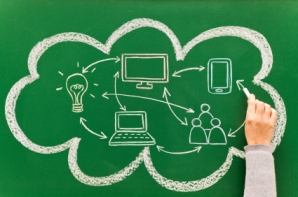10 Point Castelfranco Charter For Public Health
3 min read

Cloud computing is a figurative term given to the technology which uses two entities; internet and isolated independent servers, in order to sustain information (data) and provide access to applications. The biggest and unmatched function that Cloud computing offers is that users don’t have to install applications in their respective PCs and gadgets, rather they access files and use applications located on the servers, thus all one has to do is to have an internet connection and a device to use it.
This actually permits clients and companies to use applications hassle-free and save their personal data on the servers and hubs. The main components that enhance users as well as this technology to be so resourceful are: integrated storage, memory storage or space, processing of memory and bandwidth.
Access operation is simple enough; end users or the beneficiaries of cloud computing just need to have a moderate or basic application that acts as a bridge between them and the servers. For example, internet explorer and many other web browsers. These browsers use the internet connection to form integration and coercion of users and providers (servers).
This service is evolving and has thrived to provide similar usage of an application being used through cloud computing, as it was installed on the end-user computer.
Commonplace cloud computing examples include email service providers as Gmail, yahoo, Hotmail etc.
One does not need to install Hotmail software on his PC, rather have an internet connection and a computer to do its job. Better be understood as, all you want and get is the end usage or the value, for instance sending and receiving emails, while the intermediary processes are done by internet and servers. Hence you use the software and hardware, instead of buying or acquiring them firstly.
SME’s and medium scale companies are using and benefiting from cloud computing services. Asolo Ulss, an International IT company in Italy, named as Castelfranco Charter for public health. This charter for cloud computing suggests ways and inform how to handle cloud computing and what measures are important for public entities to consider.
The ‘Castelfranco’ Charter Suggests:
- Using distant broadband set-up to connect the business, the cloud facility sources, and the customers.
- Ensuring that the cloud service provider proposes use of a remote cloud as a preliminary step before converting to an open or public cloud.
- A well sorted plan must be presented when copying applications and information to the clouds under maintainable safety, administration, and economic circumstances.
- Guarantee that the data origins where the object’s data will be stored are situated in a nation which pledges rules and procedures in compliance with policies.
- Data compactness and transferability must be fail-safe by the cloud service providers if the individual needs to take benefit of the deals of alternative service provider.
- The cloud service supplier must be able to certify nonstop processes while in the clouds.
- Standby/data storing actions must be involved in the cloud provider’s running policy.
- The cloud service provider must document its obligation for operation failures, interruption, system disrupts, embezzlement or damage, and data impairment.
- The material and communication equipment substructure must be adapted for facility managing skills.
- The provider must assign a hazard and confidentiality supervisor who will oversee safekeeping, security, and data controlling.
The bottom line is that through easier controlling and relatively reduced preservation needs, cloud computing empowers IT and IT users to prompt adjustment of IT properties (use, storage and networking), so that they can encounter inconsistent and impulsive corporate demand.






Yeah, this is possible bseauce it centralizes the internet into a more singular location by which it’s easier for single companies to have control over it. This can easily mean greater invasion of personal space and privacy where they can hit you with ads even more and be able to more closely watch what you say, where, and how. The internet was originally based on the concept of being a system where people can be free, but this could take it into a bad direction.